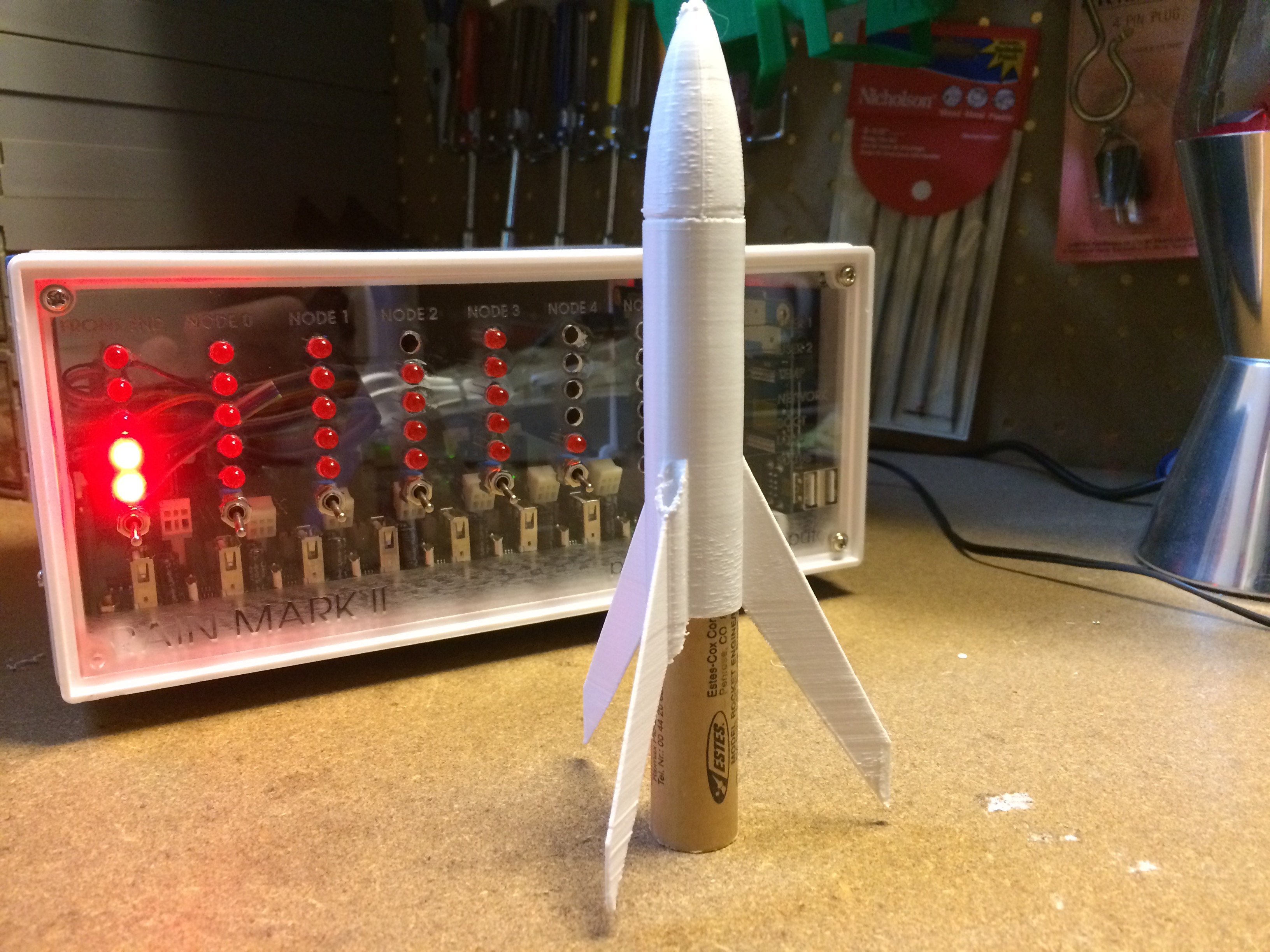Pump the Brakes
 Looks like work on RAIN Mark II will be slowing-down a bit for a couple of reasons: First, the snow has receded which means work that can only be done during the month we call “summer” takes priority over anything that can be done inside (plus there’s just lots of fun things to do outside…). Second, it looks like I misunderstood how the 2018 Hackaday Prize works. I assumed that having your project in the top 20 positions of the leaderboard when a challenge concluded was what they meant by “The top twenty projects from each challenge will be awarded $1000 and will move on to the finals…”. Instead, they selected 20 projects using some other process, and RAIN Mark II didn’t make that cut. This is a bummer, because I invested time and effort promoting the competition with the misguided idea that doing so could result in injecting some resources into the project (which could have dramatically accelerated its progress). I should have spent this time working on the project instead. But it’s a good reminder to me of the pitfalls of competition, and that any project whose success relies on it is vulnerable to competition’s inherent inefficiencies. I’m glad to have had an opportunity to have these inclinations put in-check while the stakes are lower than they would be later on in the project. The whole experience has caused me to reflect on the purpose of the project itself and I have a renewed focus as a result. The next step for Mark II will be to complete the assembly of an ARM-based cluster with the same node count as the Intel-based Mark I machine. Once this is complete, I can duplicate Mark I’s run of the hpl benchmark on Mark II and have an apples-to-apples comparison of the performance difference between the two architectures. This was the original purpose of building Mark II, and once this is known it will be possible to describe an ARM-based system with equivalent power to an Intel-based system and determine at what scale ARM outperforms Intel in terms of processing power vs. total system efficiency (cost, power consumption, cooling, physical space, etc.). This will complete the work on the hardware side of Mark II. I can then move-on to both the software aspect of Mark II, as well as using the Mark II hardware as a platform for the development of Mark III hardware components. I’ll need around $250.00 worth of hardware to get the system to a point where these tests can be run. I’m selling-off the Mark I hardware in an effort to cover it, but it’s indeterminate how long this will take and as such progress will stall until this is complete. Thank-you to everyone who took the time to support the project on Hackaday.io.
Looks like work on RAIN Mark II will be slowing-down a bit for a couple of reasons: First, the snow has receded which means work that can only be done during the month we call “summer” takes priority over anything that can be done inside (plus there’s just lots of fun things to do outside…). Second, it looks like I misunderstood how the 2018 Hackaday Prize works. I assumed that having your project in the top 20 positions of the leaderboard when a challenge concluded was what they meant by “The top twenty projects from each challenge will be awarded $1000 and will move on to the finals…”. Instead, they selected 20 projects using some other process, and RAIN Mark II didn’t make that cut. This is a bummer, because I invested time and effort promoting the competition with the misguided idea that doing so could result in injecting some resources into the project (which could have dramatically accelerated its progress). I should have spent this time working on the project instead. But it’s a good reminder to me of the pitfalls of competition, and that any project whose success relies on it is vulnerable to competition’s inherent inefficiencies. I’m glad to have had an opportunity to have these inclinations put in-check while the stakes are lower than they would be later on in the project. The whole experience has caused me to reflect on the purpose of the project itself and I have a renewed focus as a result. The next step for Mark II will be to complete the assembly of an ARM-based cluster with the same node count as the Intel-based Mark I machine. Once this is complete, I can duplicate Mark I’s run of the hpl benchmark on Mark II and have an apples-to-apples comparison of the performance difference between the two architectures. This was the original purpose of building Mark II, and once this is known it will be possible to describe an ARM-based system with equivalent power to an Intel-based system and determine at what scale ARM outperforms Intel in terms of processing power vs. total system efficiency (cost, power consumption, cooling, physical space, etc.). This will complete the work on the hardware side of Mark II. I can then move-on to both the software aspect of Mark II, as well as using the Mark II hardware as a platform for the development of Mark III hardware components. I’ll need around $250.00 worth of hardware to get the system to a point where these tests can be run. I’m selling-off the Mark I hardware in an effort to cover it, but it’s indeterminate how long this will take and as such progress will stall until this is complete. Thank-you to everyone who took the time to support the project on Hackaday.io.
